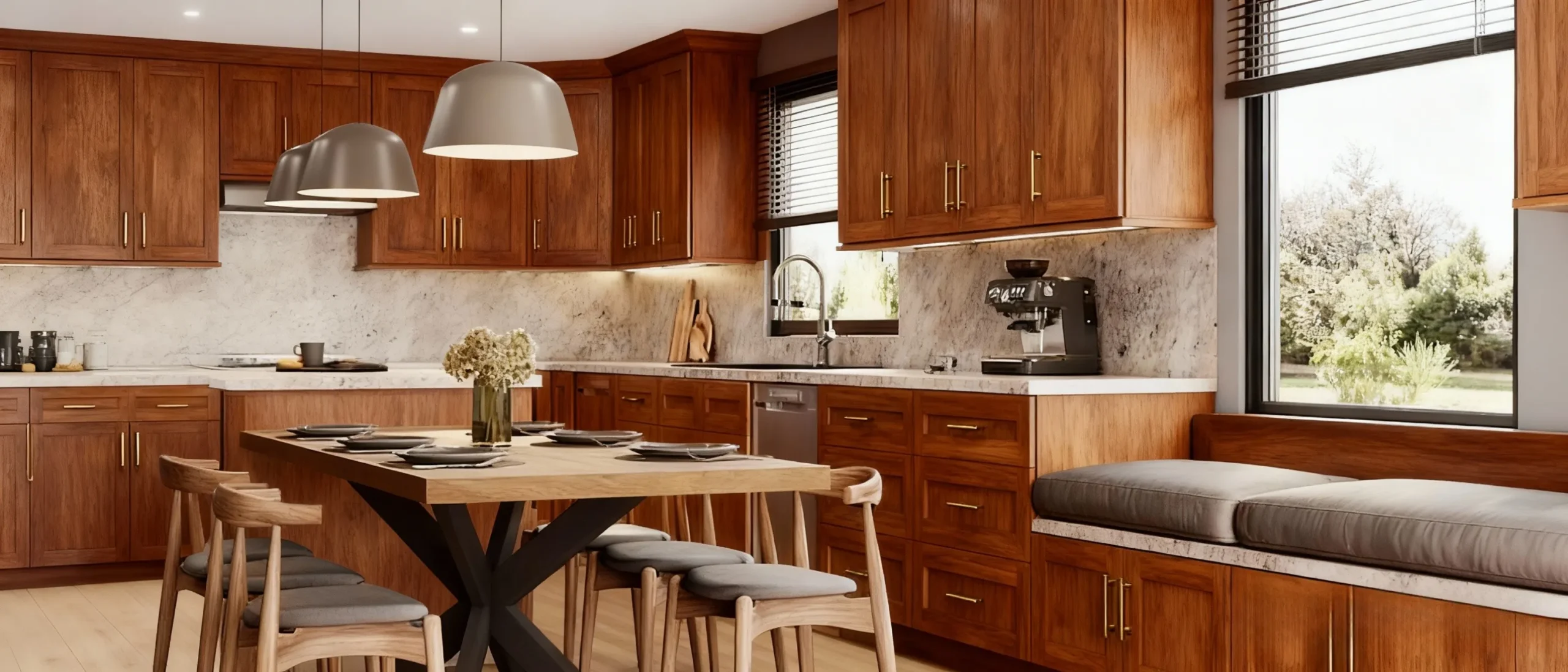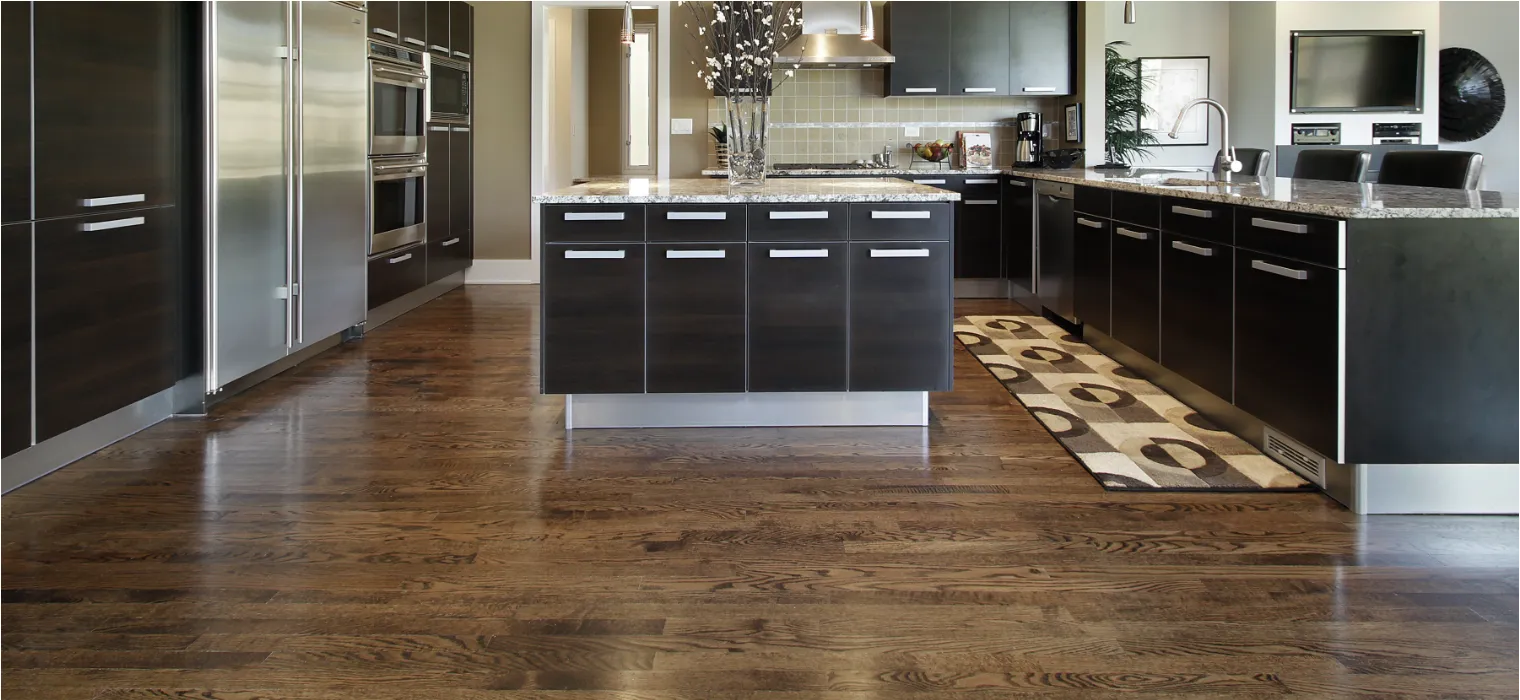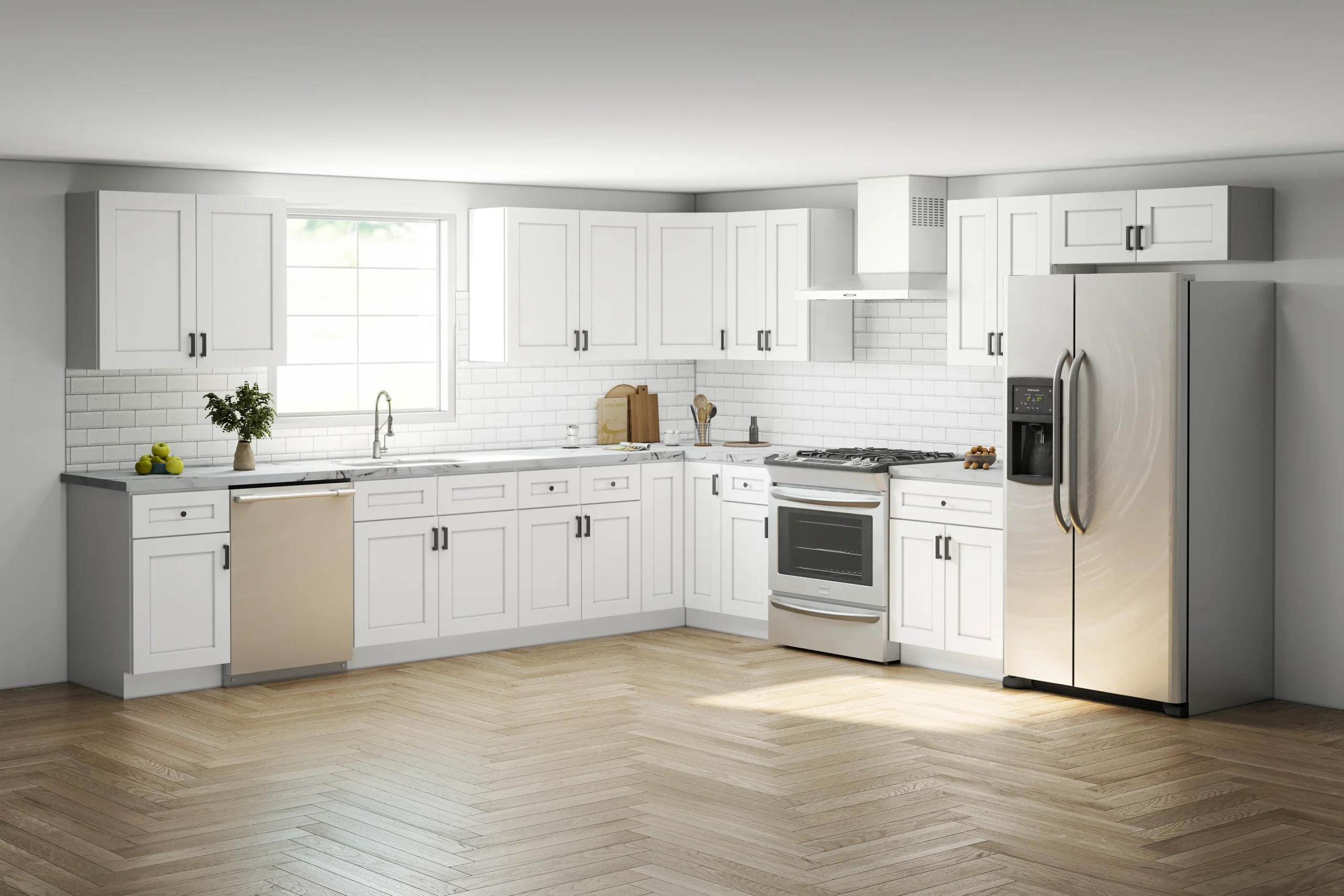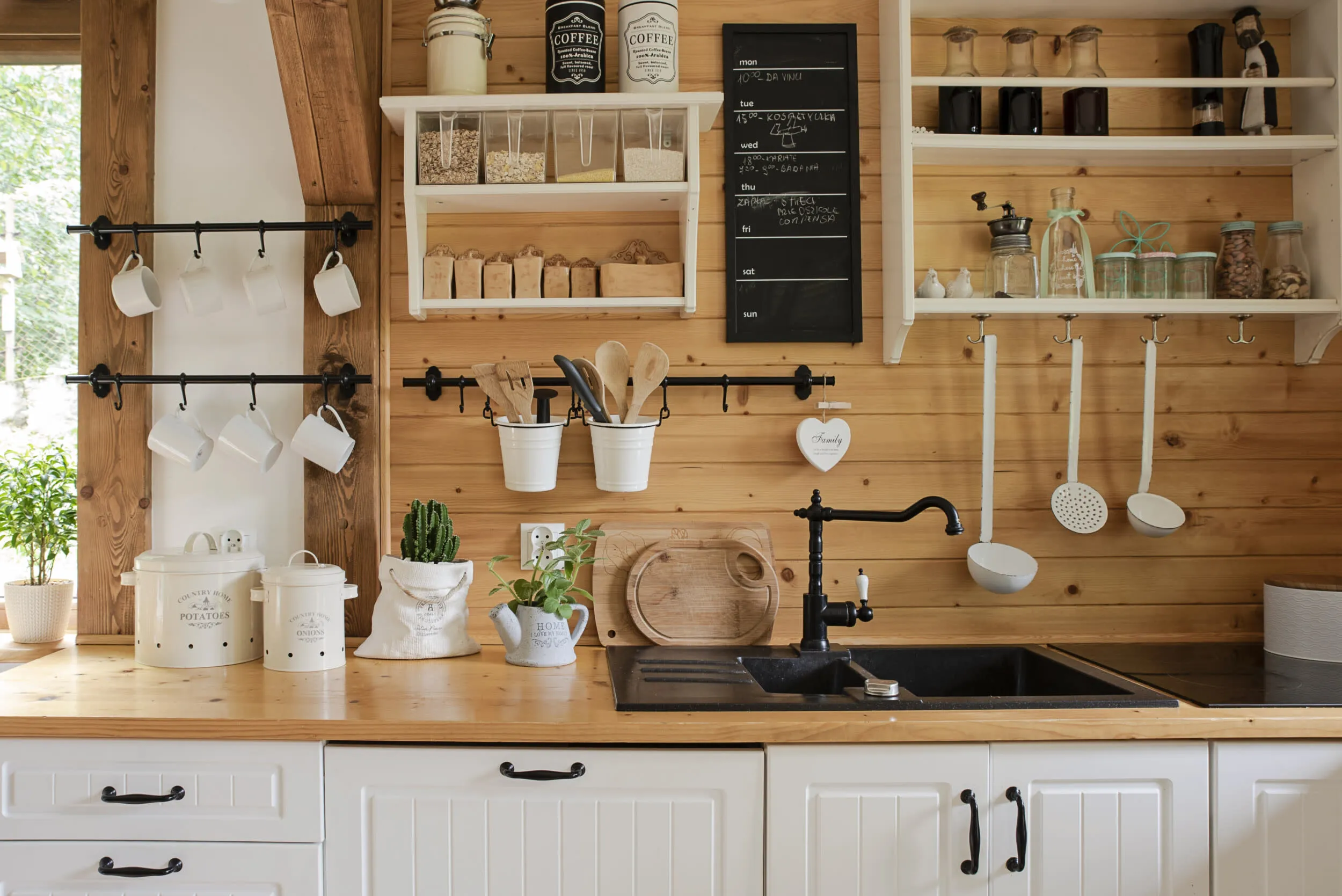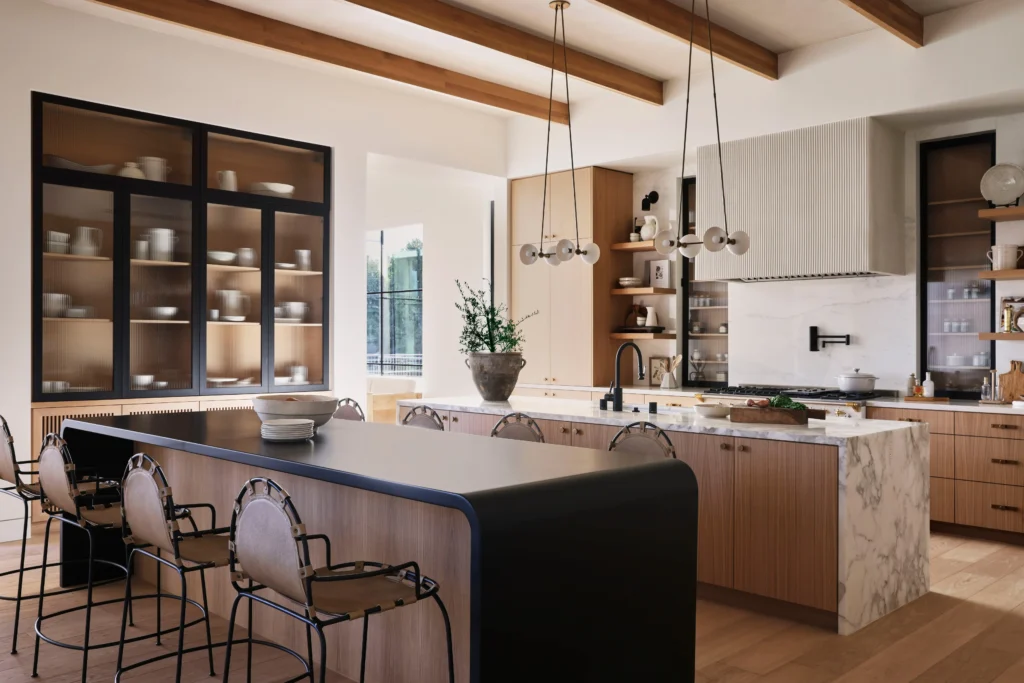
Crowded prep zones. Nowhere for guests. One island does too much. Two islands split the work, clean the look, and keep people moving. Here is the plan that works.
Double islands make kitchens easier to use and nicer to live in. Give one island to cooking and cleanup. Give the other to serving and seating. Plan aisle widths, lighting, and storage like a system. The result is calm, fast, and social.
You want clear steps, not fluff. Each question below gives a quick answer first, then deeper rules with tables and checklists you can copy into your plan.
Are double kitchen islands worth it?
Double islands are worth it when one island is overloaded. Two zones stop traffic jams and protect hot work. The room feels more open because tasks spread out and people sit away from the stove.
Use one island for prep/sink and the other for seating/serving. This split lowers mess on the guest side and gives you a true workbench near the cooktop. If space is small, do not force two islands. A bigger single island may be better.
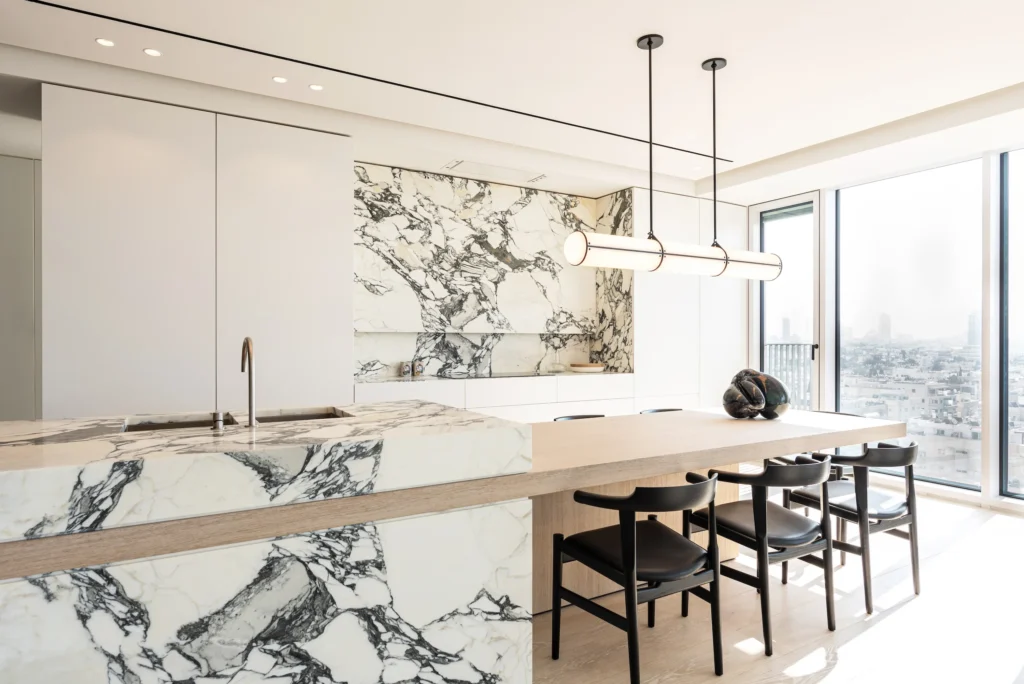
Why two islands help
- Flow: Guests park at one island, cooks move at the other.
- Safety: Fewer crossings with knives, pans, and boiling pots.
- Speed: Two landings mean faster plating and easier cleanup.
Quick “worth it” test
- Do you host often?
- Does your current island hold both prep and seating?
- Do people crowd the sink or cooktop during parties?
If you answered “yes” to all, two islands can pay off.
How much space do two islands require?
Most homes need a wide room to fit two islands plus safe walkways. Plan 42–48 inches between work edges. Add more where stools live or where two doors open across one aisle.
Keep at least one straight shot path through the kitchen. Do not dead-end a fridge or oven door against an island. If you cannot keep clear paths, reduce island depth or go back to one island.
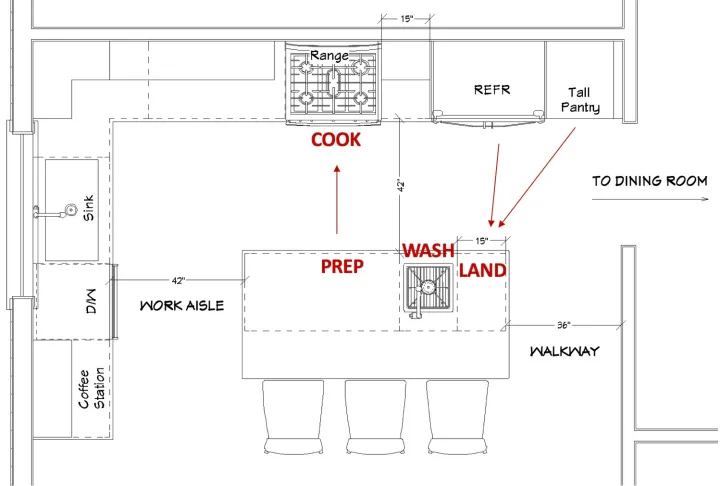
Rule-of-thumb space map
| Zone | Minimum target | Better target | Notes |
| Between islands | 42″ | 48″–54″ | More if two cooks cross here |
| Perimeter to island (work) | 42″ | 48″ | Check appliance swing |
| Perimeter to island (seating) | 48″ | 54″–60″ | Add for chair push-back |
| Seating overhang | 12″ | 14″–16″ | Add supports for deep overhangs |
Tip: If you cannot hold 42″ at key aisles, favor one large island.
What is the minimum aisle clearance between islands?
Aim for 48 inches between island work edges so two people can pass and bend at drawers without bumping. Go to 54–60 inches if both islands have appliance doors facing each other.
Narrower looks sleek on paper but feels tight in daily use. Test with painter’s tape on the floor. Move chairs in and out. Open oven and dishwasher doors. Adjust before you build.
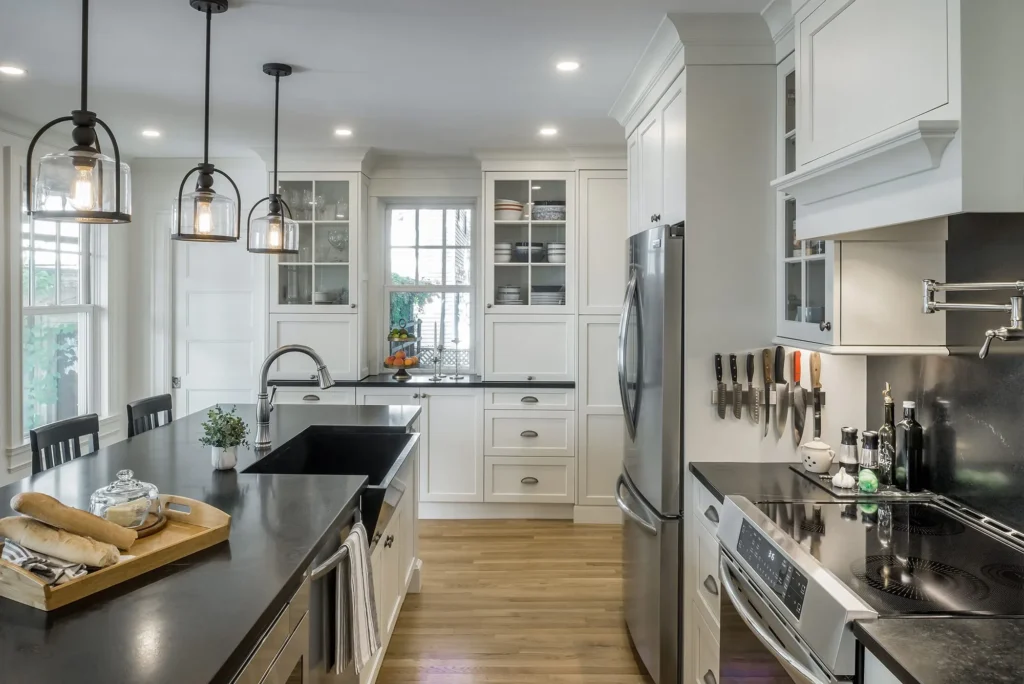
Aisle check table
| Scenario | Clearance target | Why |
| Two people passing | 48″ | Avoid shoulder clashes |
| Opposing drawers/doors | 54″–60″ | Both can open and stand |
| Seating across a work aisle | 54″ | Chairs plus walking room |
| Accessible route | 60″ | Wheelchair turn needs space |
Which double-island layout fits my floor plan?
Match layout to room shape and doors. Parallel islands fit wide, rectangular rooms. T-shaped pairs link prep and seating at one end. Wrap-around styles shape a large social zone. Mismatched islands split size by function.
Start with doors and windows. Draw the walkways first. Put the sink and trash near the cooktop. Then place the seating island where guests see the view but do not block the work triangle.
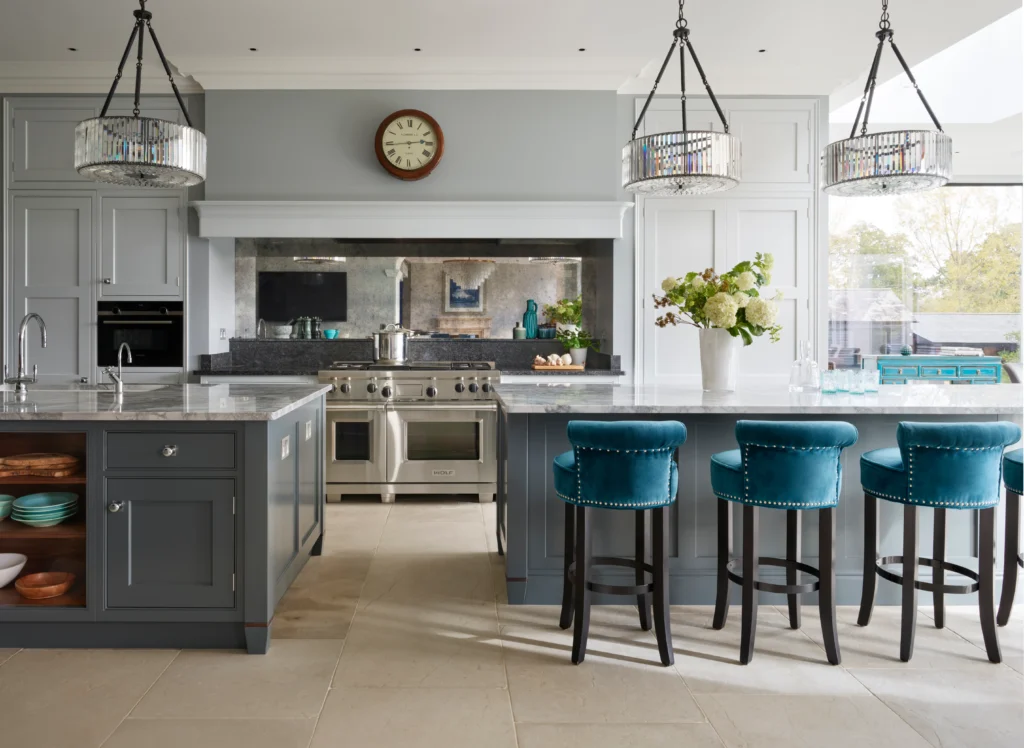
Layout guide
| Room shape | Best layout | Why it works |
| Wide rectangle | Parallel | Straight lines, easy sightlines |
| Long + narrow | T-shaped | Shortens travel, links tasks |
| Big square | Wrap-around | Social hub, strong focal point |
| Irregular | Mismatched | Tailors size to each task |
Tip: Keep major appliances on the prep island side.
Parallel or T-shaped islands: which is best?
Parallel islands create two long stations with a clear lane between. Great for big families and caterers. T-shaped islands pack prep and seating into one node, which helps long rooms and keeps people closer.
Pick parallel for events and batch cooking. Pick T-shaped if you want one main hub, like a family table attached to prep. If unsure, sketch both and walk the paths in your space with tape.
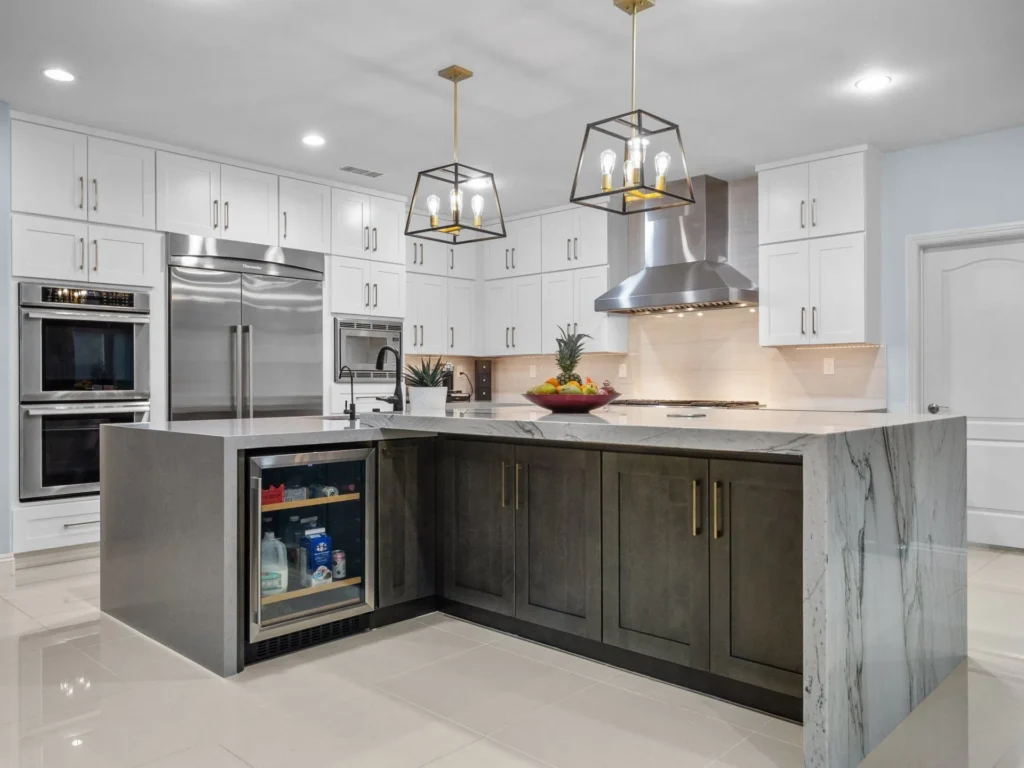
Head-to-head
| Factor | Parallel | T-shaped |
| Traffic flow | Straight, fast | Central hub, shorter reaches |
| Seating | On second island | At the crossbar |
| Look | Clean, modern lines | Social and compact |
| Fit | Wide rooms | Long rooms |
Prep and seating: how should I divide functions?
Give prep the sink, knives, compost, and trash. Give seating the overhang, outlets, and storage for plates and napkins. Keep hot work, sharp tools, and dirty dishes off the guest island.
Put the dishwasher by the prep sink. Keep a small bar sink, ice drawer, or beverage fridge on the seating island if you host often. Guests serve themselves without crossing into the cook’s lane.
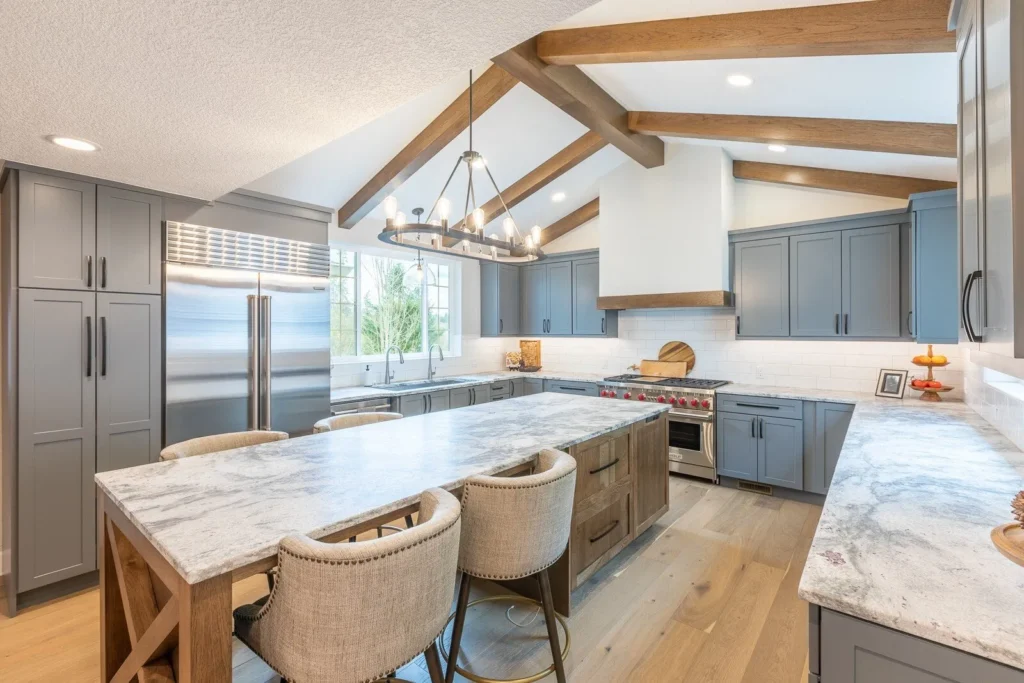
Simple zoning table
| Feature | Prep island | Seating island |
| Main sink + dishwasher | ✓ | |
| Knife block, cutting boards | ✓ | |
| Trash + compost | ✓ | |
| Overhang + stools | ✓ | |
| Outlets for devices | ✓ | |
| Serving drawers (napkins, flatware) | ✓ | |
| Buffet landing for pans | ✓ | ✓ |
Tip: Add a pass-through landing near the cooktop so hot pans move safely to the serving island.
Do I need two sinks or one?
One sink is fine if it sits near the cooktop and dishwasher. Two sinks help large families, kosher kitchens, or heavy hosts who want a bar sink on the seating island.
If you add a second sink, give it its own task: bar, baking, or prep. Keep the main sink large and deep. Plumb trash and dishwasher near the main sink to keep cleanup fast.
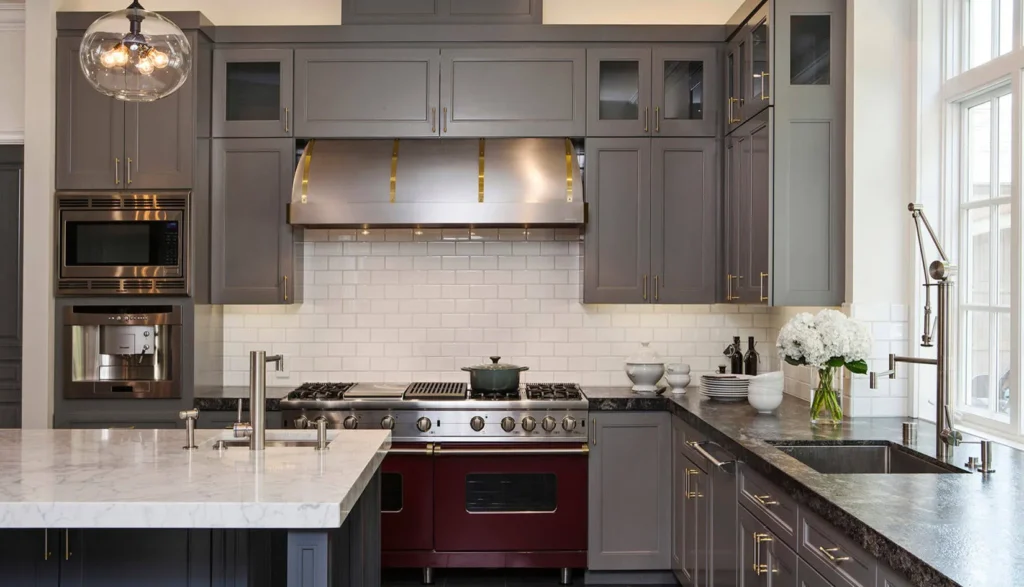
Sink planning notes
- 30–33″ main sink handles trays and pots.
- 15–18″ bar sink chills drinks and handles ice.
- Keep at least 18–24″ landing on both sides of the main sink.
- Put a pull-out trash beside the main sink.
What countertop thickness suits large islands?
3 cm stone looks solid and needs fewer build-ups. 2 cm saves money but may need support and built edges. For a bold look, use a mitered drop edge that appears thicker without the weight.
Choose finish by use. Matte and leathered hide prints. Polished wipes fast. Keep the same edge profile across both islands for a calm line. Use supports for deep seating overhangs.
【Edge samples showing 2 cm, 3 cm, and mitered drop edges side by side | Google Image: “kitchen island countertop thickness 2cm 3cm mitered drop edge”】
Thickness and seating table
| Choice | Look | Support notes |
| 2 cm | Light, sleek | Add build-ups or brackets |
| 3 cm | Solid, common | Fewer brackets |
| Mitered drop | Bold edge | Costs more; plan seams |
Tip: For 14–16″ stool overhangs, add steel plates or hidden brackets.
How to light a double-island kitchen?
Layer three types: task (bright on prep), ambient (even fill), and accent (soft on seating). Pendants should sit clear of sightlines and feel balanced over each island.
Use brighter, focused light on the prep island. Use warmer, dimmable light over seating. Add under-cabinet strips on the perimeter so both islands read clean against lit walls and counters.
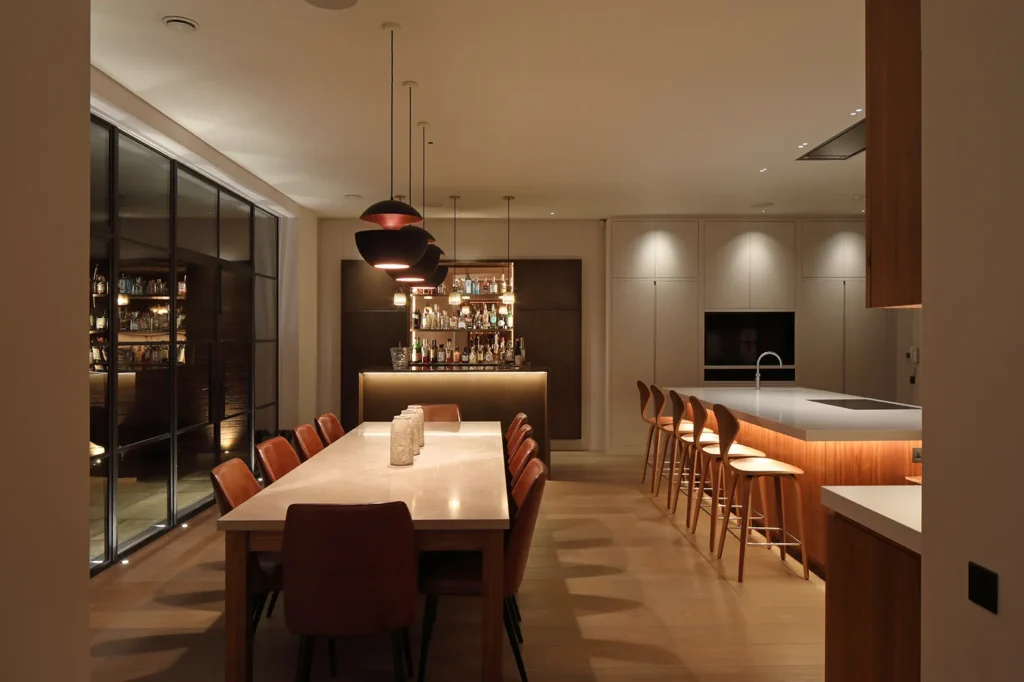
Lighting quick map
| Zone | Fixture | Aim |
| Prep island | Bright pendants or track | Shadow-free cutting and mixing |
| Seating island | Warm pendants | Cozy, glare-free conversation |
| Perimeter | Under-cabinet strips | Even work surface light |
| Ceiling | Recessed cans | Fill light, no hot spots |
Tip: Center pendants to the island top, not the room centerline, so they stay aligned after installs.
How much do double kitchen islands cost?
Cost depends on size, material, outlets, sinks, and seating hardware. Two small islands can cost less than one giant stone slab. But extra plumbing, wiring, and lighting add up.
Price the system, not just the tops. Include cabinetry, panels, supports, outlets, plumbing, lighting, and seating brackets. Keep edges simple and finishes consistent to control labor.
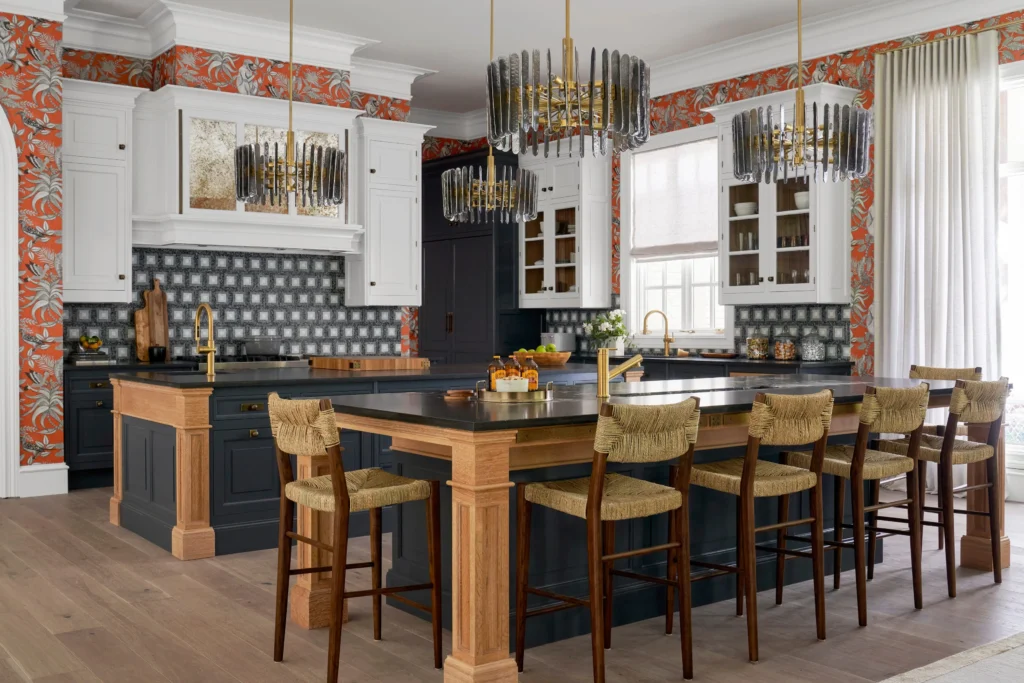
Cost drivers table
| Category | What adds cost | How to save |
| Cabinets | Complex shapes, drawers | Use standard boxes; keep shapes simple |
| Countertops | Thick edges, rare stones | Use miter only on the seating island |
| Plumbing | Second sink and disposal | One main sink; bar sink only if needed |
| Electrical | Many outlets + lighting | Group outlets; dimmable circuits |
| Seating | Deep overhang supports | Keep 14–16″; use hidden steel plates |
Tip: Mix materials: stone on prep, durable composite or wood on seating for budget and warmth.
Conclusion
Give each island a clear job. Hold safe aisles. Light tasks and seats right. Keep edges and finishes simple. Done well, two islands feel easy, social, and timeless.
FAQ
Are double kitchen islands still in style?
Yes for large, social kitchens. Designers use them to split prep and serving while keeping flow open. They suit big rooms; small rooms may feel crowded.
How much space should I keep between two islands?
Plan 48 inches as a daily-use target. Go wider where drawers, ovens, or dishwashers face each other, or where stools push back into the aisle.
Which layouts work best for two islands?
Parallel fits wide rooms. T-shaped fits long rooms. Wrap-around and mismatched layouts solve tricky shapes while keeping clear paths and views.
Do double islands suit small kitchens?
Usually no. You need generous aisles and clear paths. In tight spaces, one larger island or a table does the job with less cost and clutter.
What is a good aisle width near seating?
Keep 54 inches or more so stools slide out and people pass. Add more for accessibility or if two doors open into the same lane.
Are two sinks necessary with double islands?
No. One main sink near the cooktop and dishwasher works. Add a bar sink on the seating island only if you host often and want drink service there.
What are the main double-island layouts?
Parallel, T-shaped, wrap-around, and mismatched are the common types. Pick based on room shape, traffic, and the view you want to frame.
How do I decide if double islands are worth it?
If guests crowd your prep zone and one island feels overloaded, two islands help. If space is tight or budgets are limited, optimize one island instead.

